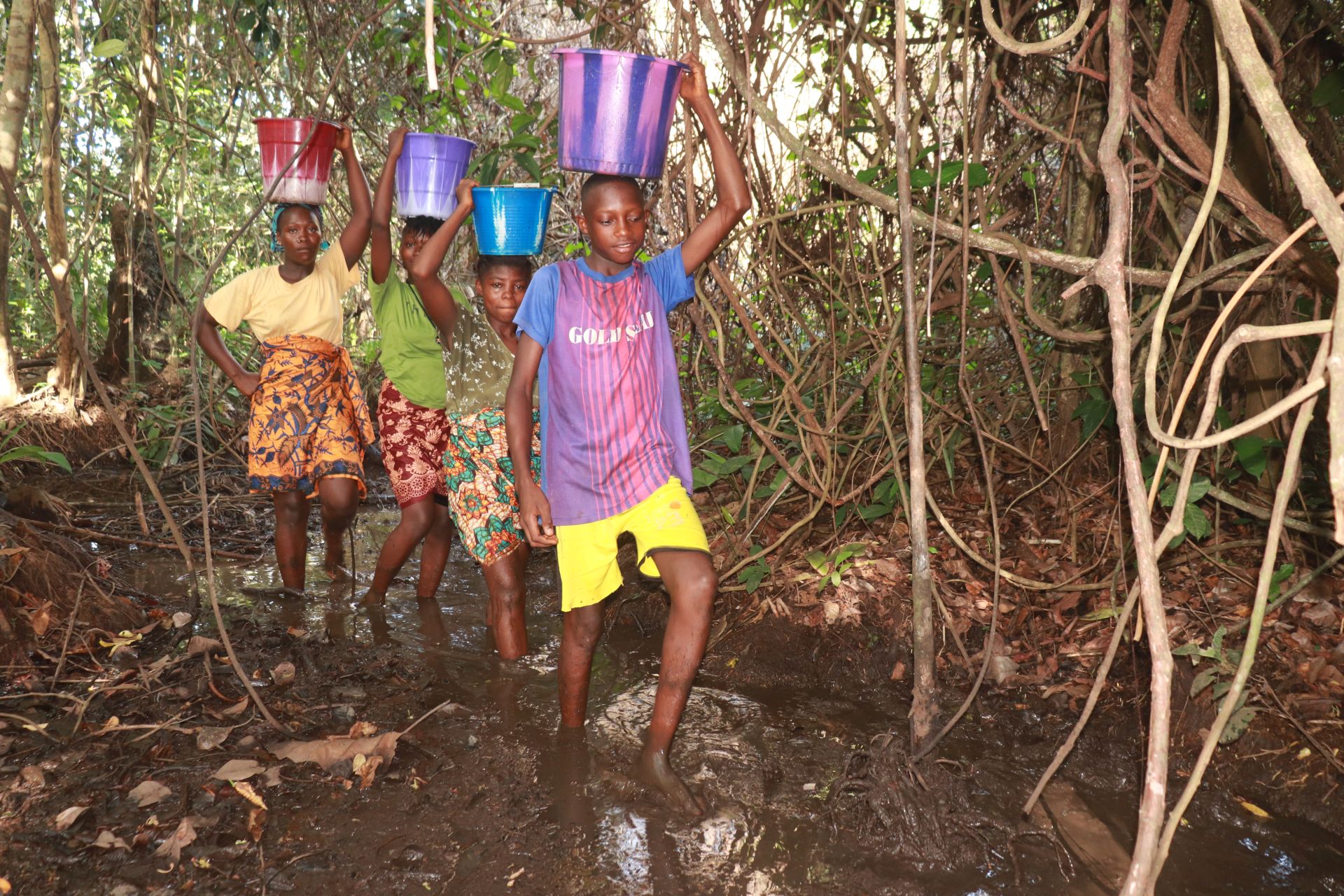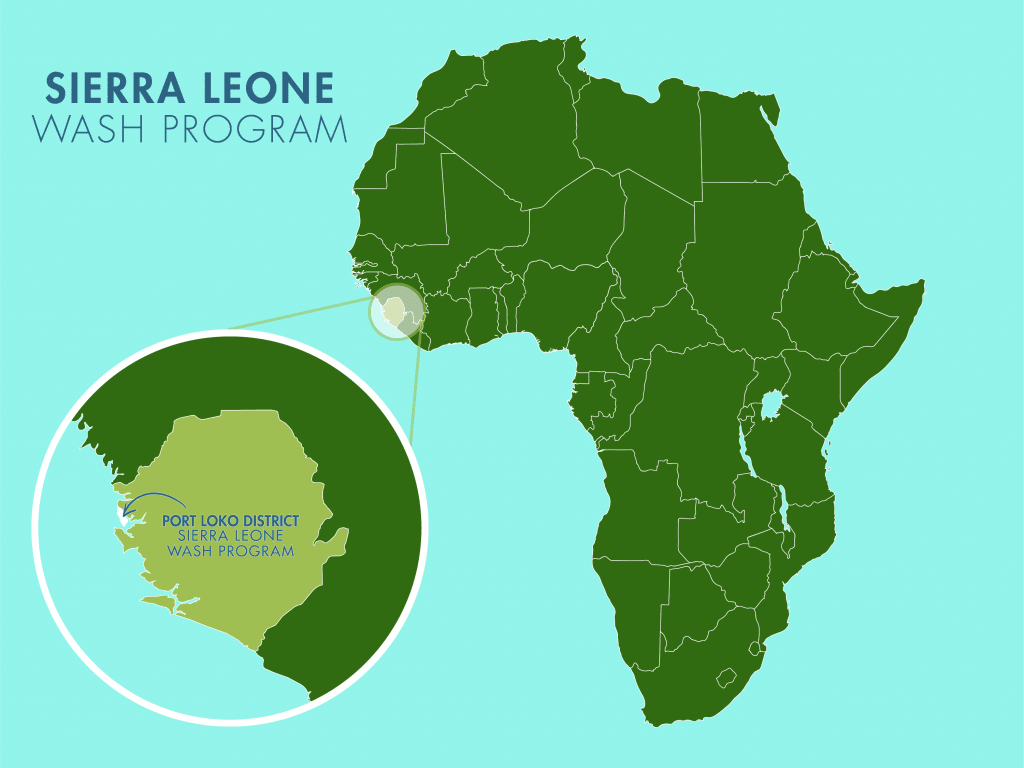In the Mapillah Community, home to 191 residents, sixteen-year-old Zainab has grown up facing the daily hardship of fetching water for her family. Like many others in the community, she has endured the long walks and unsafe conditions that come with the water crisis.

Zainab struggles through the thick vegetation, balancing swamp water on her head.
When asked about her experience, she explained, “Life has been unbearable for me since this well breakdown. I am using the swamp to fetch water because the well is no longer working. It is very difficult to fetch water from the swamp. The road is bad, and there is mud that one must step on before accessing the swamp. By the time you fetch water, you [will] already be dirty. Apart from that, the walking distance to the swamp is far. It is very difficult to do a lot of trips considering the constraints for water.”
Zainab spends about three hours each day fetching water. She shared, “The long walking distance makes me delay fetching water, especially when the well gets dry. I spend more time fetching water from the swamp. Overcrowding at [the] waterpoint makes me delay fetching water, mostly on Saturdays when a lot of people will need water.”

Zainab collects swamp water.
“I use most of my time to fetch water, mostly in the morning and evening hours. This alone makes me tired and exhausted, especially in the evening. I have limited time to study since I must fetch water for use at home and to launder my uniforms. By the time I am through, I am very tired of studying my notes. This has even affected my grades in exams, mostly in subjects that need focus, for example, mathematics," said Zainab.
The situation also affects her sense of safety. Zainab described, “The swamp is in an isolated area. It is risky to fetch water from this place alone, for snakes and other animals. Also, it is difficult to fetch and transport water from the swamp because of the mud. It will hold your feet tightly, making it difficult for you to walk.”

Zainab and friends trek through stagnant water and mud on their way from the swamp.
When asked how a new waterpoint would change her situation, she said, “I believe rehabilitating our well will prevent me from going to the swamp to fetch water. I will not face the present constraints I am facing each time I go to fetch water from that source.”
Zainab dreams of a better future.
“I want to study hard and become a lawyer in the future,” she said with determination. However, the daily struggle to fetch water takes away valuable time that could be used to study or help her family.
“I will help my parents to prepare food and also help my mum to fetch firewood,” she said when asked what she would do if she didn’t have to spend all that time fetching water.

Finally, she expressed how she feels about the task that dominates so much of her day: “I feel worried each time I must fetch water, especially from the swamp, because of the long distance.”
Rehabilitating the well in the Mapillah Community will not only give Zainab back valuable time but also ensure her safety and renew her confidence. With clean water easily accessible and time to put towards her goals, Zainab's future potential is exponential.
Steps Toward a Solution
Our technical experts worked with the local community to identify the most effective solution to their water crisis. They decided to rehabilitate an unsafe, insufficient well to convert it to a borehole well.
Rehabilitating a Well
Abundant water often lies just beneath our feet. Aquifers—natural underground rivers—flow through layers of sediment and rock, offering a constant supply of safe water.
The well marked for this overhaul is dry for several months a year and needs major work to supply adequate, clean water to the community year-round. A hand auger will be lowered inside the well, powered by a drill team. The team will work to drill several meters deeper to hit a sufficient water column to ensure the well supplies water throughout all seasons. As the team drills, the casing will be installed, transforming the bottom of this well into a borehole. PVC piping will connect this lower system directly to the pump, a component we know will also improve water quality. Finally, we will reconstruct the platform for the well and attach the hand pump.
Once this plan is implemented, everyone within the community will have access to safe drinking water in quality and quantity, even through the dry months.
Community Education & Ownership
Hygiene and sanitation training are integral to our water projects. Training is tailored to each community's specific needs and includes key topics such as proper water handling, improved hygiene practices, disease transmission prevention, and care of the new water point. Safe water and improved hygiene habits foster a healthier future for everyone in the community.
Encouraged and supported by our team's guidance, the community elects a water user committee representative of its diverse members. This committee assumes responsibility for maintaining the water point, organizing community efforts, and gathering fees to ensure its upkeep.

 Borehole Well and Hand Pump
Borehole Well and Hand Pump

















